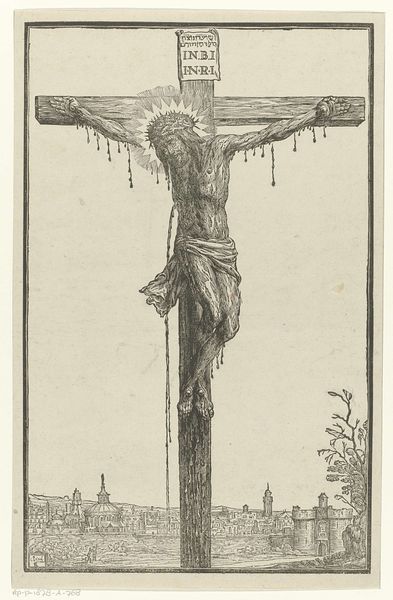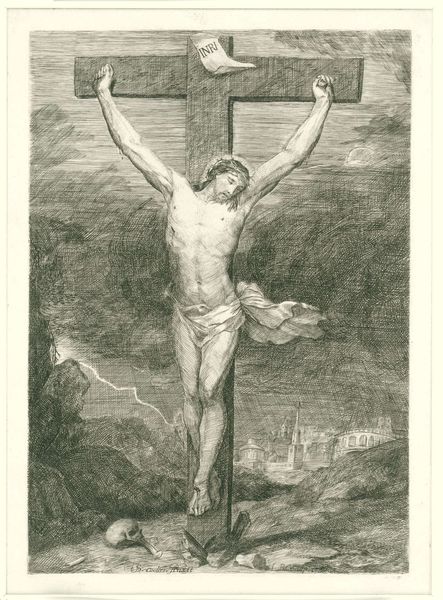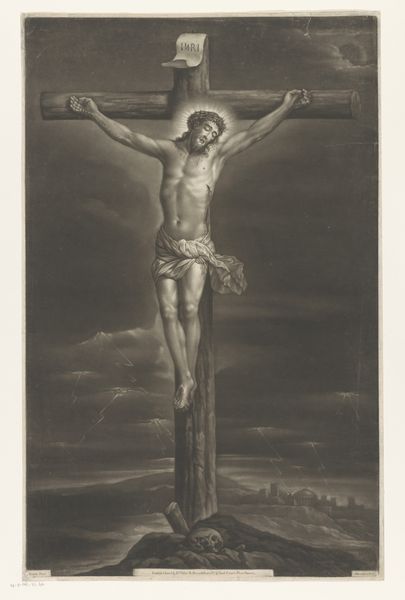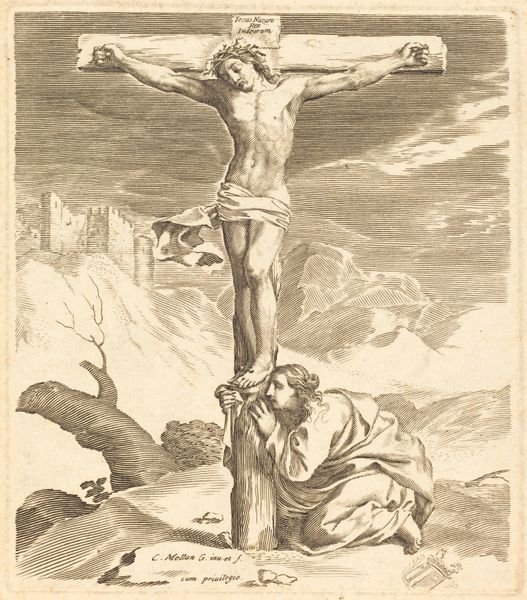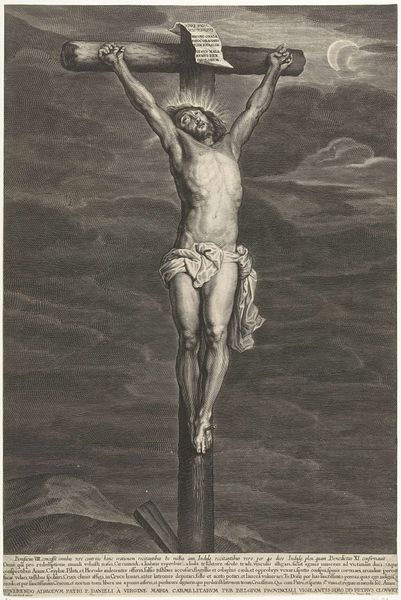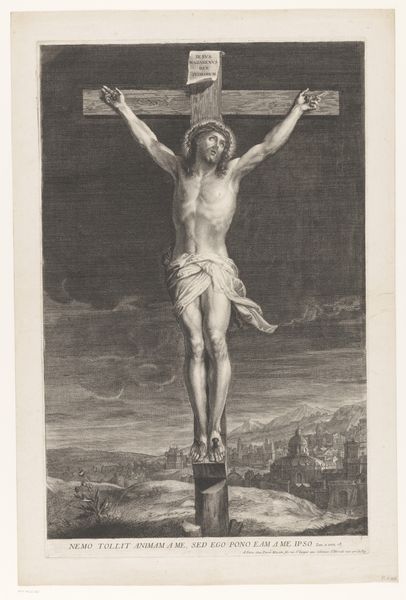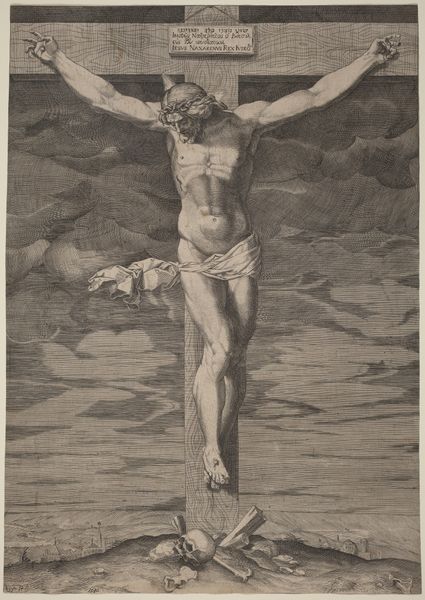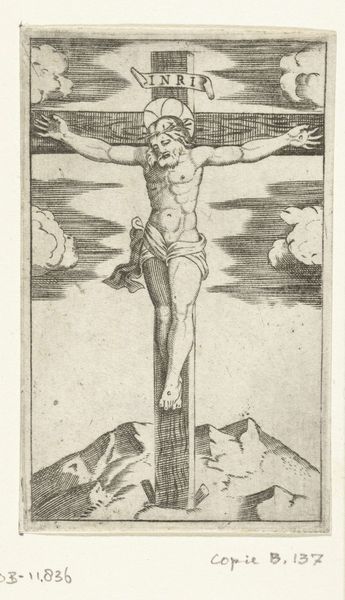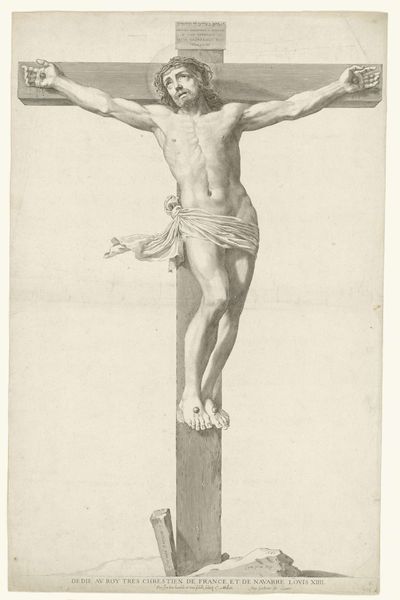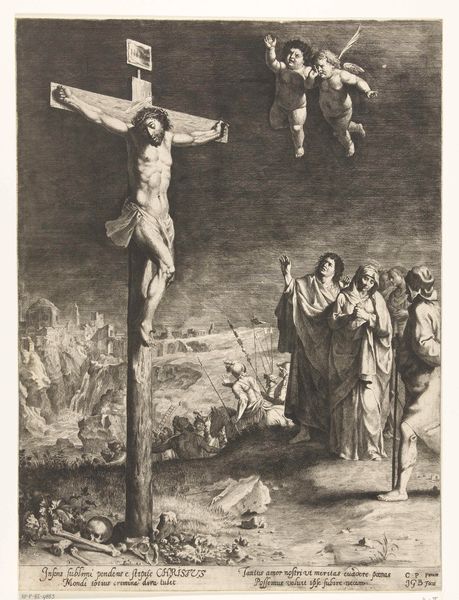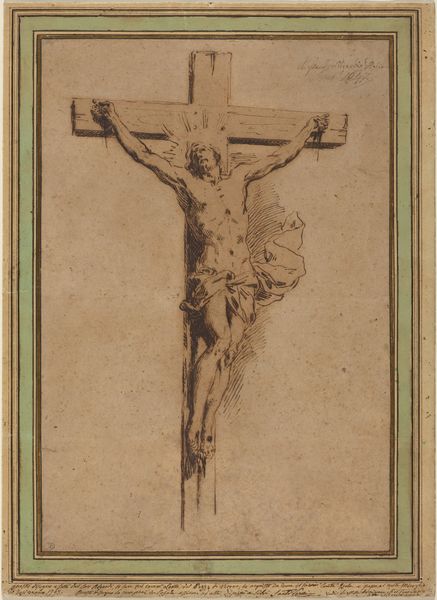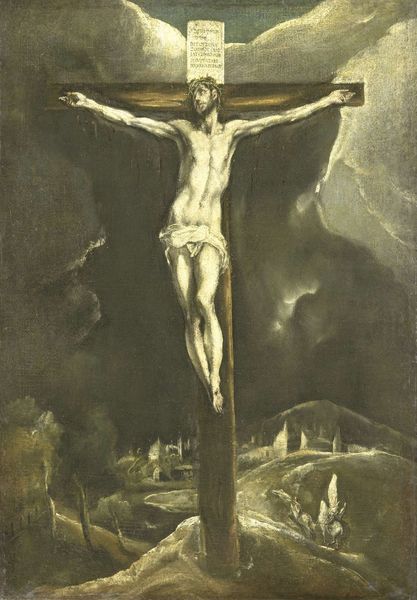
print, intaglio, engraving
#
baroque
# print
#
intaglio
#
landscape
#
figuration
#
line
#
history-painting
#
engraving
Dimensions: height 189 mm, width 137 mm
Copyright: Rijks Museum: Open Domain
Curator: Dirck de Bray's "Christus aan het kruis," dating sometime between 1635 and 1694, strikes me as stark and unsettling. Editor: Unsettling is precisely the word. The severe linearity creates an atmosphere charged with raw emotion, even melodramatic. The print is strikingly graphic. Curator: Indeed, its power lies in that bold contrast. As an engraving and intaglio print, it presents us with a meditation on suffering through sharply defined forms. Look at how de Bray utilizes line not only to depict Christ’s form but to sculpt the entire landscape. Editor: Note, too, how that line emphasizes the public nature of Christ’s torment. The detailed cityscapes place this event in a specific cultural and geographic context, bringing the divine narrative down to earth and situating the crucifixion within the human realm of civic structure. What political undercurrents might we ascribe to its baroque aesthetic? Curator: The elevated position of Christ becomes a focal point in its composition, overshadowing all terrestrial affairs while being integrally linked to it. Is there a subtle tension between spiritual authority and worldly governance implied in de Bray's work? His calculated composition and chiaroscuro technique force a certain kind of visual hierarchy, inviting a rigorous viewing experience. Editor: Or maybe we are simply responding to the intense religiosity of the period and place. How was the narrative of Christ used by the elite? Consider the commission history of these prints and their broader distribution during times of intense reformation. Its visual language, like most, existed as a tool for cultural manipulation. Curator: True, yet such historical elements risk eclipsing the art object in its own right. Doesn't its form suggest how such symbols might transcend context? What this print ultimately imparts is its ability to create profound emotional resonances through the considered arrangement of pure forms, irrespective of how elites leveraged similar imagery. Editor: But acknowledging that is not separate from analyzing why specific forms of art—visual, narrative, and others—became valued at certain junctures. An aesthetic void of sociopolitical perspective risks promoting shallow interpretations. Curator: Fair enough; it seems we can agree this is more than mere imagery, inviting reflection on its form and role in society. Editor: I'd second that.
Comments
No comments
Be the first to comment and join the conversation on the ultimate creative platform.
